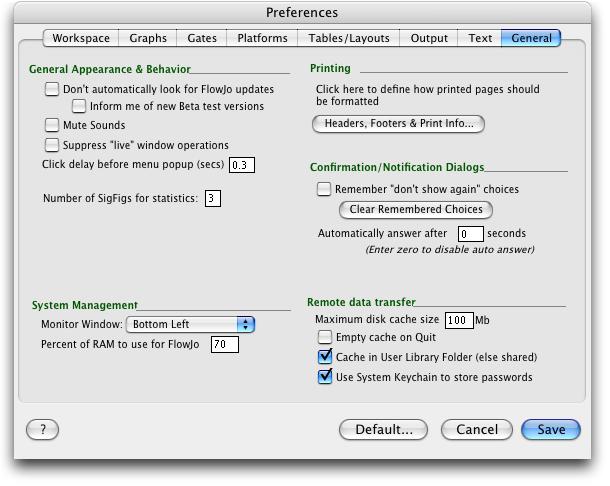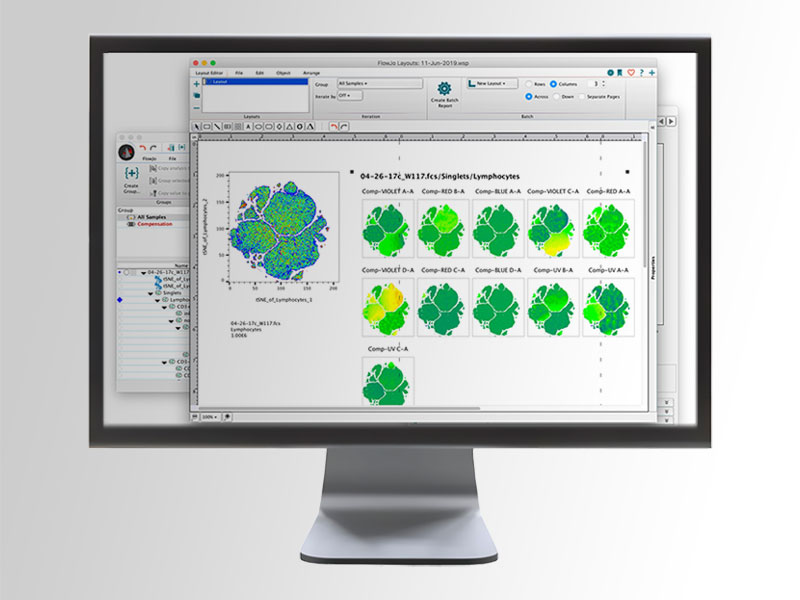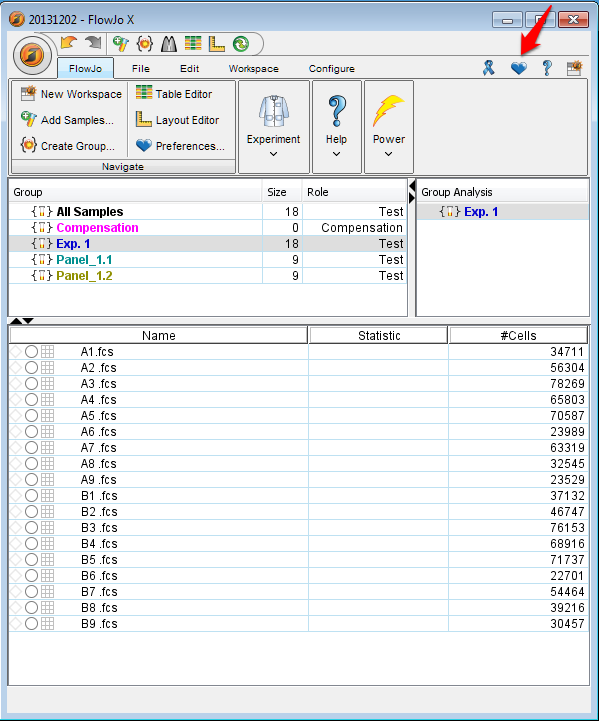

Nowadays, flowcharts are still used for describing computer algorithms, as well as a variety of business workflows and processes.
#FLOWJO TRIAL WORKSPACE SIZE CHART CODE#
Source code then became a more concise way for algorithms to be expressed. Flowcharts became a popular means for describing computer algorithms until the 1970s when interactive computer terminals and third-generation programming languages were introduced. In 1949, Herman Goldstine and John von Neumann developed a flowchart to plan computer programs. Graham, also the Director of Formcraft Engineering at Standard Register Industrial, adapted flowcharts for information processing with the development of the multi-flow process chart to display multiple documents and their relationships.īy 1947, ASME adopted a symbol set derived from Gilbreth’s original work as the “ASME Standard: Operation and Flow Process Charts.” Art Spinanger trained employees at Procter & Gamble where he developed their Deliberate Methods Change Program. Two fellow graduates of Mogensen’s class also helped popularize flowcharts in other industries.

#FLOWJO TRIAL WORKSPACE SIZE CHART HOW TO#
He began training business people in how to use flowcharts to make their processes more efficient, spreading their popularity and use. Mogensen saw an opportunity to extend flowcharts and other useful tools of the industry to business workers. In the 1930s, industrial engineer Allan H. Flowcharts quickly became a mainstay in industrial engineering for structuring work processes such as assembly line manufacturing. Originally called “flow process charts,” they were developed by industrial engineers Frank and Lillian Gilbreth who first presented them to the American Society of Mechanical Engineers (ASME) in 1921. History of flowchartsįlowcharts have been around since the 1920s. Some flowcharts are small, only depicting a few key steps of a process, while others are more comprehensive, able to represent complex strings of steps and potential outcomes.įlowcharts are often referred to by specialized names such as Process Flowcharts, Process Maps, Functional Flowcharts, Business Process Maps, Business Process Modeling and Notation (BPMN) diagrams, and Process Flow Diagrams (PFD). Anyone viewing a flowchart should be able to logically follow the process from beginning to end. Steps are linked by connecting arrows that define the directional flow of steps. They are commonly used to document complex processes, systems, and computer algorithms in a comprehensible way.Įach step in the sequence is noted with a diagram shape such as a rectangle, diamond, or oval. Advanced tips & tricks for making professional-looking flowchartsĪn overview of flowcharts What is a flowchart?Ī flowchart is a visual representation of a sequence of operations that are performed to create a particular outcome.A section for learning how to create and design an effective flowchart.An overview where we explore what a flowchart is and how it’s used.We have broken things up into three parts. Flowchart fanatics wanting to brush up on the fundamentals and stay up-to-date on new trends.Marketers, Developers, HR, UX Designers, Visual Designers, or any other department that needs to communicate processes to other departments or stakeholders, and.People struggling to communicate their ideas clearly,.Anyone interested in visualizing a workflow or process,.Luckily, flowcharts are also one of the easiest diagrams to create, making it silly not to incorporate them into every project.

When planning out any kind of process, visualizing things as they flow from one person or component to another is a great way to think through every possibility.īeyond full-proofing your process, visuals make it easy to share your process with others, so they can understand and reference them quickly.


 0 kommentar(er)
0 kommentar(er)
